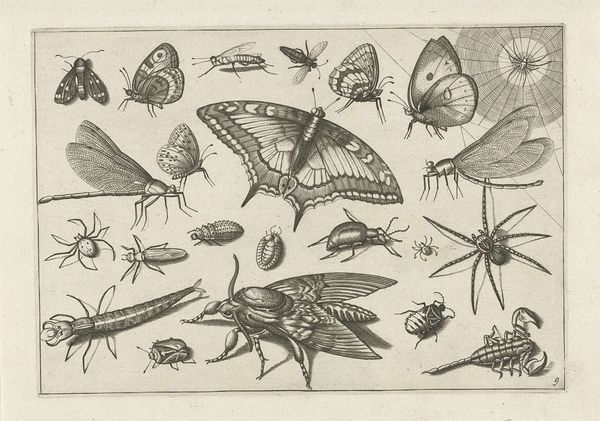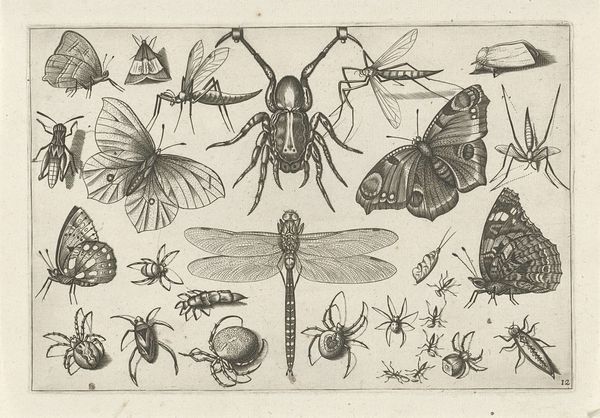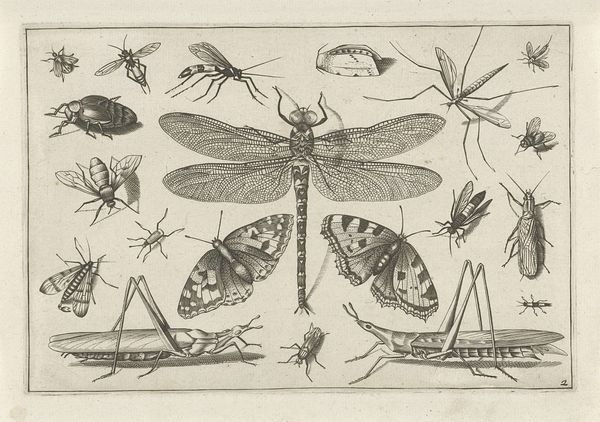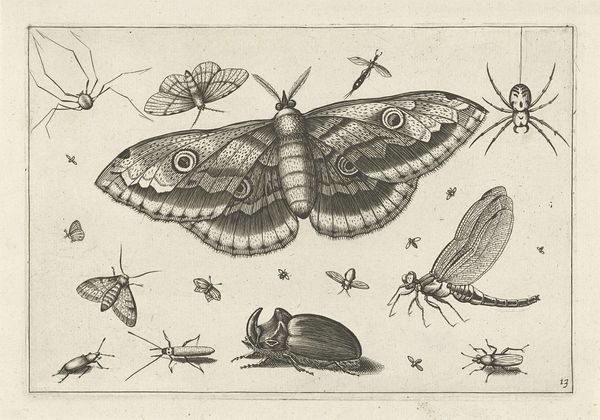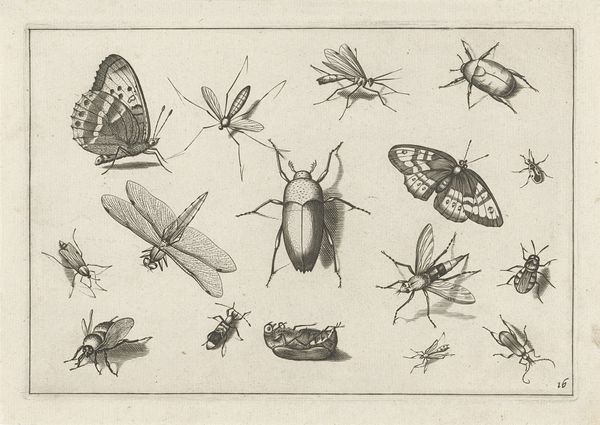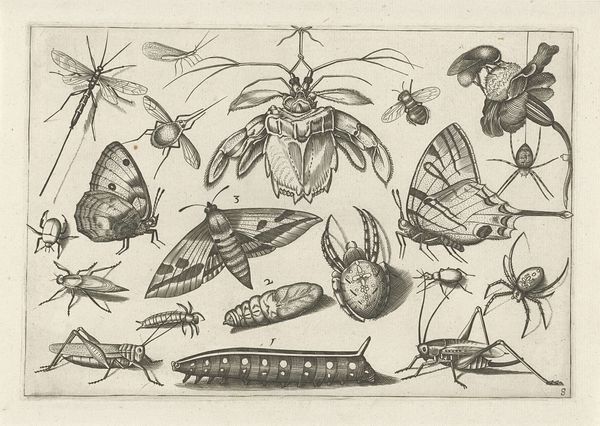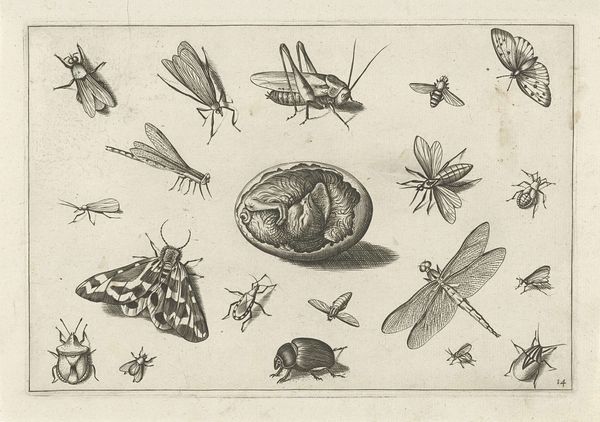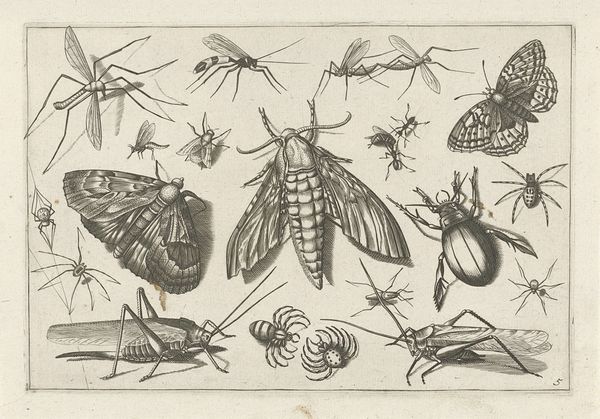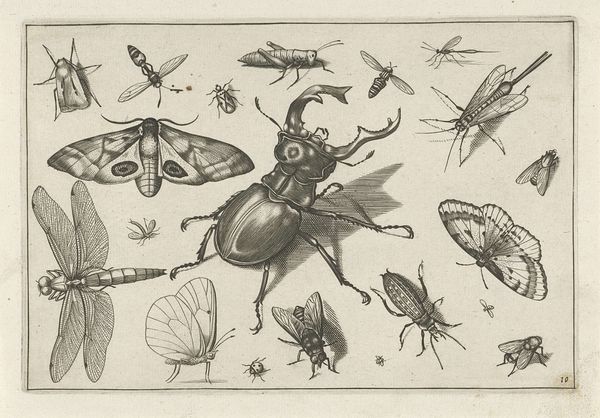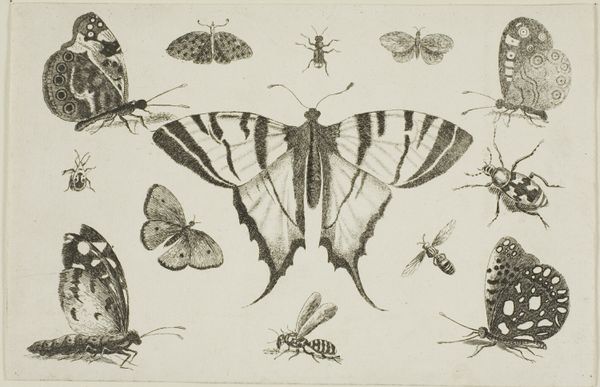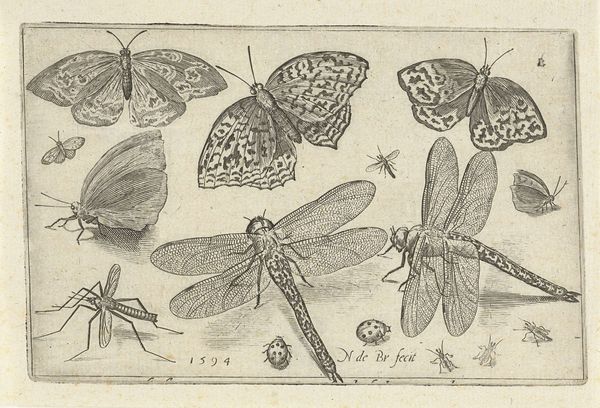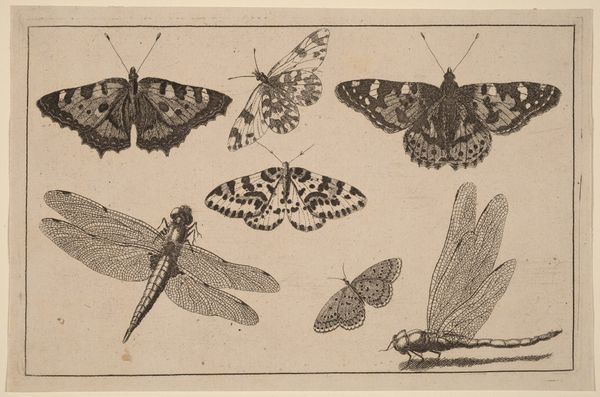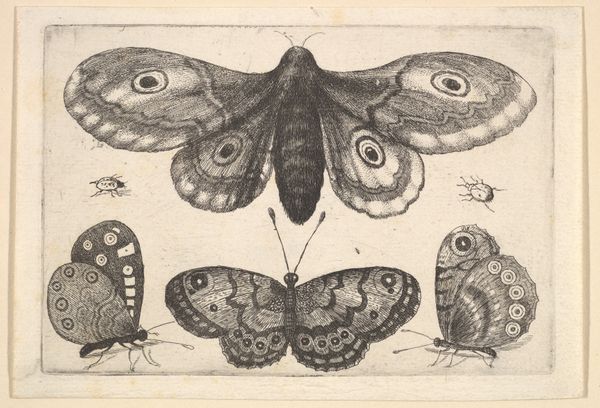
#
comic strip sketch
#
pen illustration
#
pen sketch
#
old engraving style
#
personal sketchbook
#
pen-ink sketch
#
pen work
#
sketchbook drawing
#
storyboard and sketchbook work
#
sketchbook art
Dimensions: height 135 mm, width 199 mm
Copyright: Rijks Museum: Open Domain
Curator: Welcome. We are looking at “Insecten” by Jacob Hoefnagel, created around 1630. It appears to be an engraving, meticulously depicting an assortment of insects. What strikes you first? Editor: The sheer detail. It’s fascinating how each insect, despite its small scale, receives so much attention. The emphasis on the materials - the ink, the paper - really comes through, creating a tangible sense of craftsmanship. I also notice that this wasn’t about just depicting what nature really looks like. Hoefnagel wanted us to admire his work too. Curator: Precisely. Hoefnagel was operating in a time when scientific illustration was beginning to blossom. The increasing exploration of the natural world fueled public interest. I wonder about his intended audience, the wealthy and educated perhaps? And this piece might speak to social hierarchies and structures, demonstrating scientific discovery through material art. Editor: Absolutely. We need to think about the engraver too, the skill needed to produce something so precise. It also invites thoughts about the accessibility of knowledge at the time. Was Hoefnagel just copying down data or adding knowledge? What does this say about our current moment? How do digital reproductions replace manual labor in some ways, changing value in art production? Curator: It's interesting to consider that shift. Back then, the act of commissioning, creating, and possessing such images spoke volumes. Ownership implied social status and an engagement with emergent scientific ideas. Editor: Exactly, consider the consumption of these images versus mass-produced items of today. It also gives rise to other important issues related to environmental concerns, raising questions on the role that man should play when portraying and relating to the animal world. Curator: A crucial point about current environmental perspectives. Looking back, art like this shaped understanding, influencing perceptions and even public policy through its aesthetic appeal and visual authority. Editor: Thank you, I found this insight to be beneficial. Curator: Likewise. Considering both the image’s materiality and historical role, this piece reveals just how art serves as an entry point into examining larger issues in time.
Comments
No comments
Be the first to comment and join the conversation on the ultimate creative platform.
